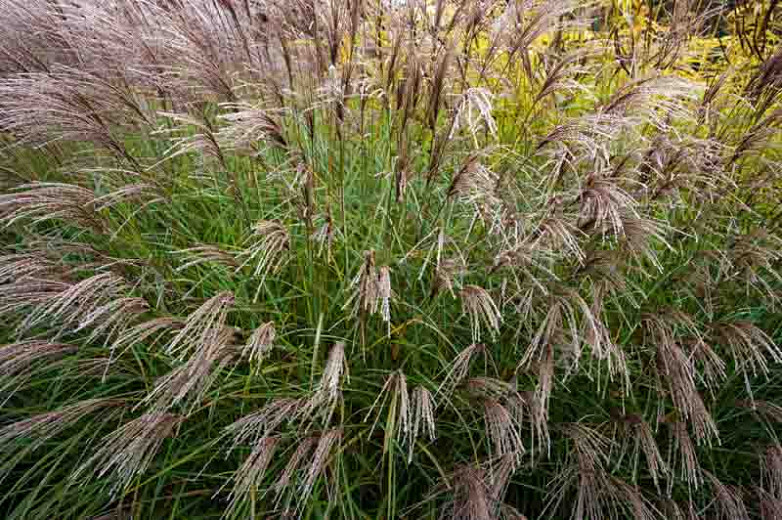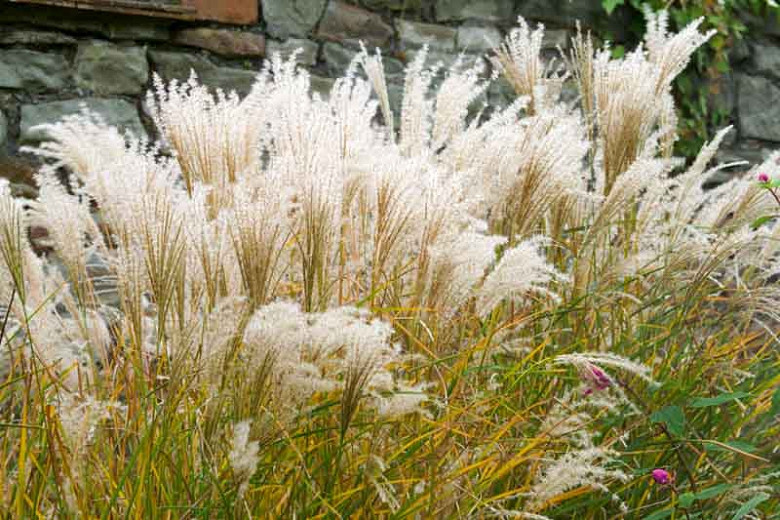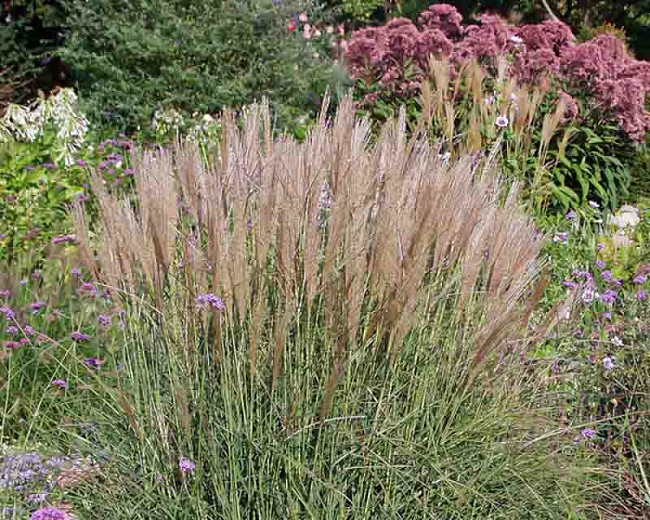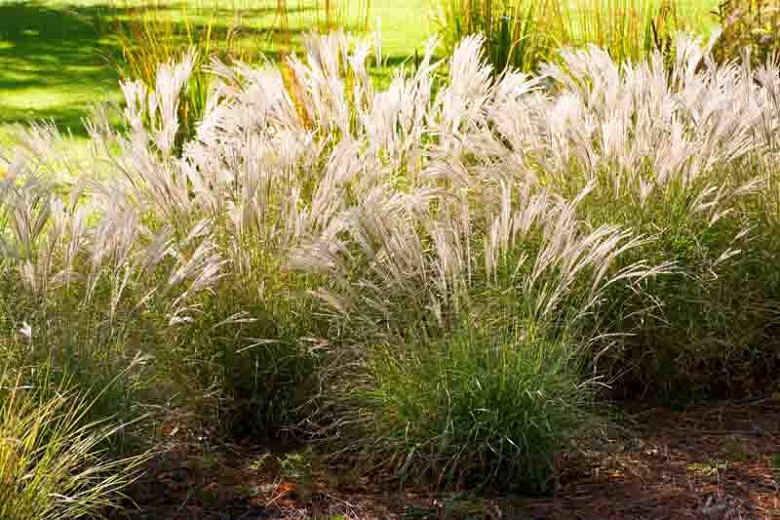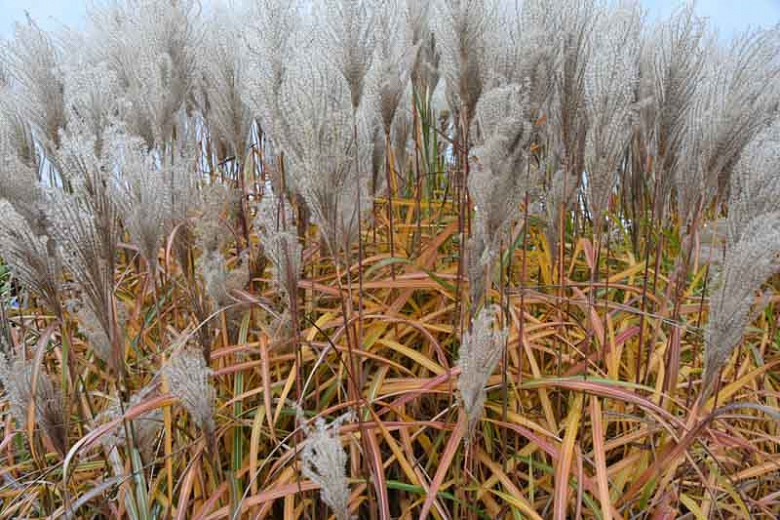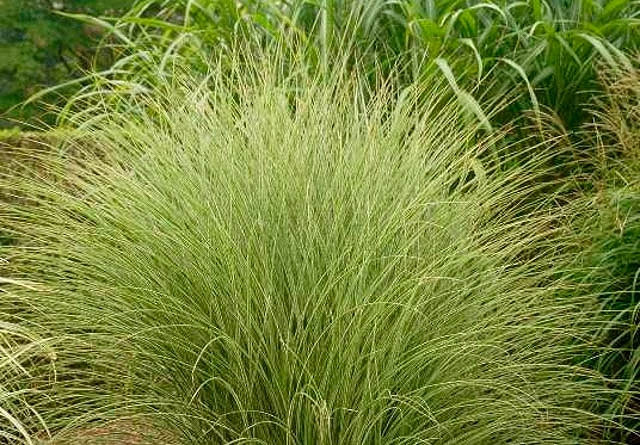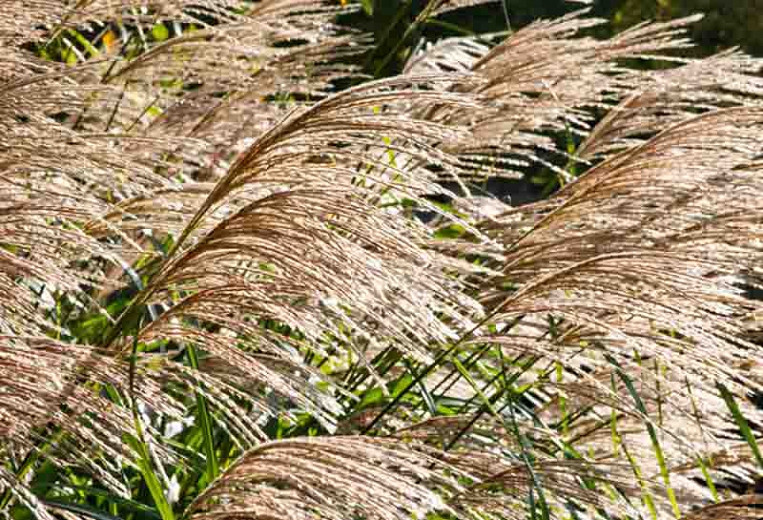Miscanthus sinensis Yakushima Dwarf (Chinese Silver Grass)
Compact and good-looking! Its fine-textured foliage, which consists of arching, silvery-green leaves borne on short, upright stems, creates an exquisite fountain shape that stands out beautifully and sways gracefully in the slightest breeze, delicately softening any landscapes.
Quite compact, Dwarf Chinese Silver Grass 'Yakushima Dwarf' (Miscanthus sinensis) is a remarkable ornamental grass for many reasons. First, its modest size makes it extremely useful in the landscape. Second, its fine-textured foliage, which consists of arching, silvery-green leaves borne on short, upright stems, creates an exquisite fountain shape that stands out beautifully and sways gracefully in the slightest breeze, delicately softening any landscape.
- Blooming in late summer to fall, 'Yakushima Dwarf' displays plume-like panicles of long-lasting, pinky-brown silky spikelets, which delicately change to silvery white as they mature and provide good winter interest.
- Rarely flopping, this striking ornamental grass can be easily grown in a dense, upright 3-4 ft. tall (90-120 cm), rounded fountain-like clump about 3 ft. wide (90 cm).
- Performs best in full sun in moderately fertile, moist, well-drained soils. Protect from excessive winter wet. Drought and salt tolerant once established.
- Very versatile, it can be used as a graceful accent plant in the garden, massed to create screens or hedges, or planted in borders, coastal gardens, city gardens, cottage gardens, or prairie plantings.
- This Chinese Silver Grass is generally pest and disease free. It is deer and rabbit resistant but attracts birds.
- Cut foliage to the ground in late winter before new shoots appear. Propagate by seed sown in pots in a cold frame in spring or by division in spring.
- Native to Asia, the species form of Miscanthus sinensis is invasive in several US states. The invasive potential is of less concern for many of its ornamental cultivars, some of which are sterile. However, as a general rule, do not plant more than one cultivar on your property, and use only a vegetatively propagated cultivar that has shown little or no evidence of self-seeding in your area.
- Discover beautiful U.S. native plant alternatives.
Requirements
| Hardiness | 5 – 9 |
|---|---|
| Heat Zones | 1 – 9 |
| Climate Zones | 2, 3, 4, 5, 6, 7, 8, 9, 10, 11, 12, 13, 14, 15, 16, 17, 18, 19, 20, 21, 22, 23, 24 |
| Plant Type | Ornamental Grasses |
| Plant Family | Miscanthus – Maiden Grasses |
| Exposure | Full Sun |
| Season of Interest | Summer (Late)FallWinter |
| Height | 3' – 4' (90cm – 120cm) |
| Spread | 2' – 3' (60cm – 90cm) |
| Spacing | 36″ – 48″ (90cm – 120cm) |
| Water Needs | Average |
| Maintenance | Low |
| Soil Type | Chalk, Clay, Loam, Sand |
| Soil pH | Acid, Alkaline, Neutral |
| Soil Drainage | Moist but Well-Drained, Well-Drained |
| Characteristics | Dried Arrangements, Cut Flowers, Showy |
| Tolerance | Deer, Drought, Rabbit, Salt |
| Attracts | Birds |
| Garden Uses | Beds and Borders, Hedges and Screens, Patio and Containers |
| Garden Styles | City and Courtyard, Coastal Garden, Informal and Cottage, Modern Garden, Prairie and Meadow |
